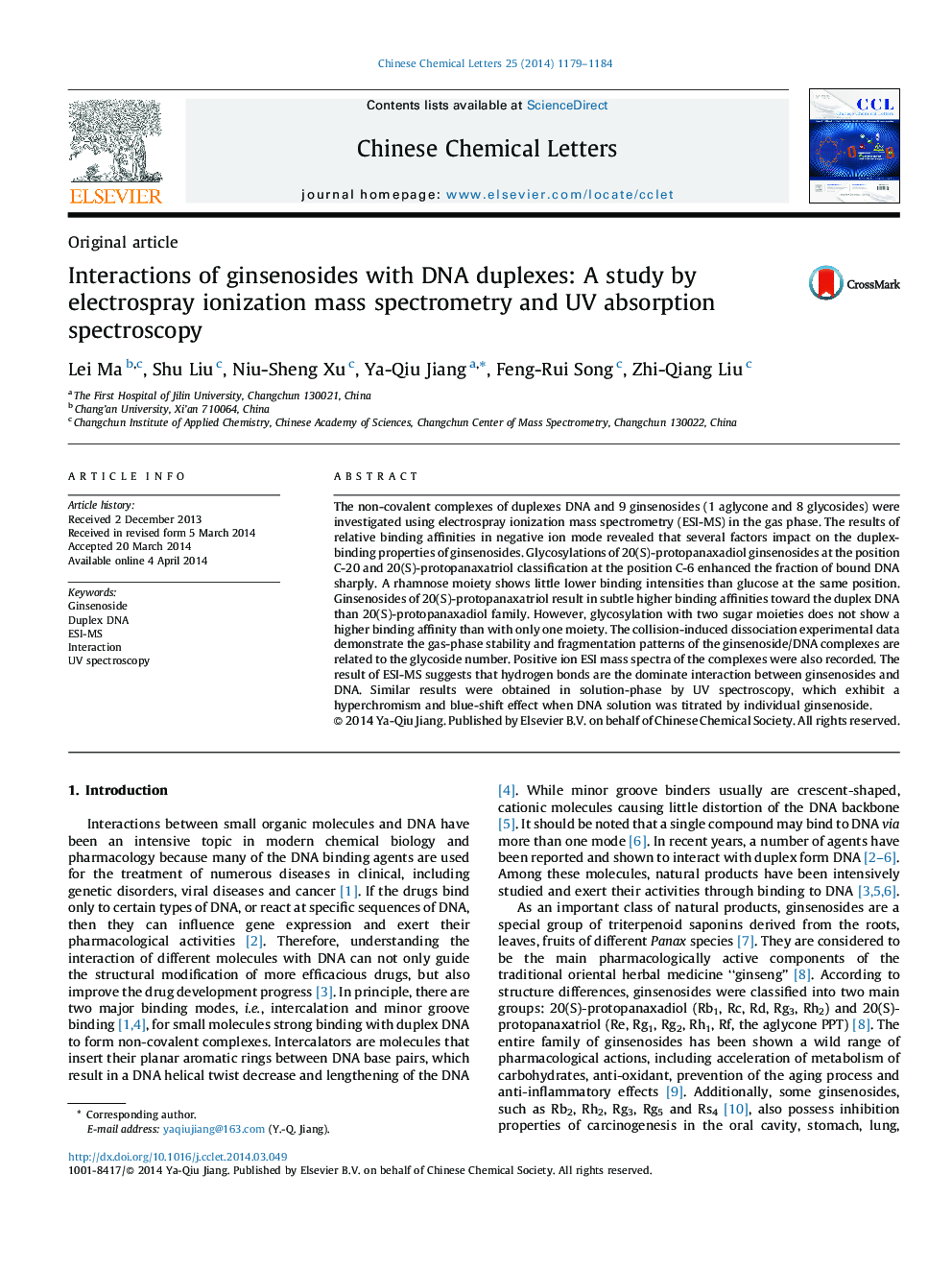| Article ID | Journal | Published Year | Pages | File Type |
|---|---|---|---|---|
| 1254783 | Chinese Chemical Letters | 2014 | 6 Pages |
The non-covalent complexes of duplexes DNA and 9 ginsenosides (1 aglycone and 8 glycosides) were investigated using electrospray ionization mass spectrometry (ESI-MS) in the gas phase. The results of relative binding affinities in negative ion mode revealed that several factors impact on the duplex-binding properties of ginsenosides. Glycosylations of 20(S)-protopanaxadiol ginsenosides at the position C-20 and 20(S)-protopanaxatriol classification at the position C-6 enhanced the fraction of bound DNA sharply. A rhamnose moiety shows little lower binding intensities than glucose at the same position. Ginsenosides of 20(S)-protopanaxatriol result in subtle higher binding affinities toward the duplex DNA than 20(S)-protopanaxadiol family. However, glycosylation with two sugar moieties does not show a higher binding affinity than with only one moiety. The collision-induced dissociation experimental data demonstrate the gas-phase stability and fragmentation patterns of the ginsenoside/DNA complexes are related to the glycoside number. Positive ion ESI mass spectra of the complexes were also recorded. The result of ESI-MS suggests that hydrogen bonds are the dominate interaction between ginsenosides and DNA. Similar results were obtained in solution-phase by UV spectroscopy, which exhibit a hyperchromism and blue-shift effect when DNA solution was titrated by individual ginsenoside.
Graphical abstractThe non-covalent complexes of duplexes DNA and 9 ginsenosides (1 aglycone and 8 glycosides) were investigated using electrospray ionization mass spectrometry (ESI-MS) and UV spectroscopy.Figure optionsDownload full-size imageDownload as PowerPoint slide
